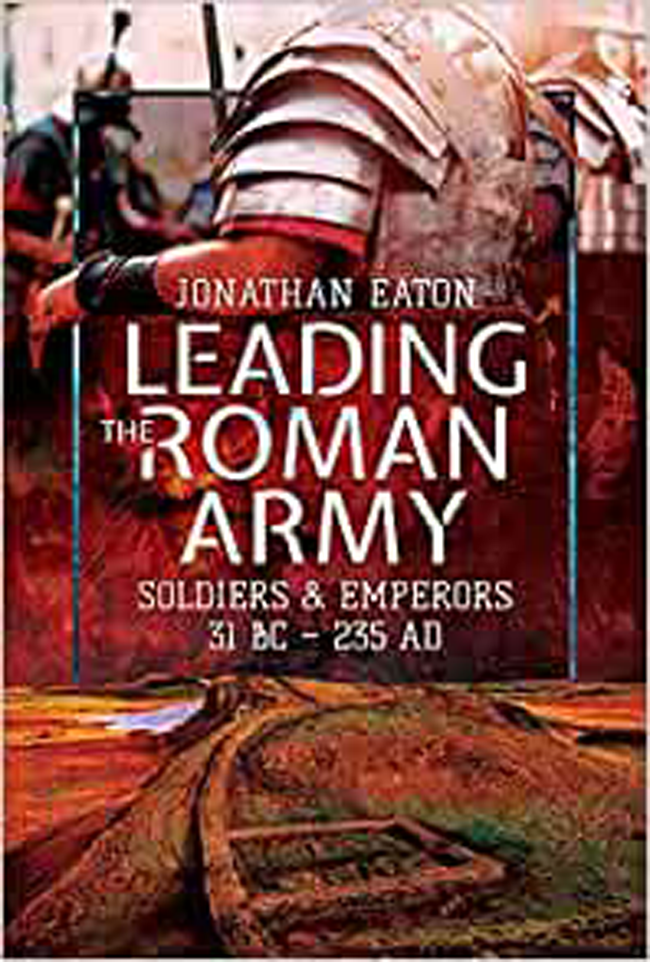
At its core, this volume offers a survey of the relationship between the Roman Emperor and the Roman army, a narrow exploration of the co-dependency between these two entities. Eaton carefully introduces his intentions for this 130-page study: ‘My research is not limited to the relationship between the emperor and the soldiers but aims to encompass the power relationship which existed between different levels of the army.’
In order to achieve this, Eaton has divided his work into six separate, yet interconnected, chapters. The first chapter deals with the military unit which commands perhaps the greatest name recognition of all Roman forces, the Praetorian Guard. Instead of a general history of the Guard, (of which there are some fine examples), Eaton uniquely focuses on the office of the Praetorian Prefect.
In his examination of the Prefecture, Eaton selects examples of ‘notable’ holders of the position of Prefect. In particular, he is interested in why these individuals were promoted and whether this was a result of valorous deeds, a personal friendship with the emperor, or just good timing on the part of that Prefect. Alongside his examination of the Prefects, Eaton suggests that the Guard was vital for the emperor's survival. He uses the example of donatives given to the Praetorians by various emperors and the control of the watchword by personal issuance. In essence, Eaton suggests, the emperor had to secure the loyalty of the Praetorians as they were the closest military force to hand. On occasions this meant sourcing trusty allies from across the empire. Overall, this first chapter is a well-argued and constructed one, although, early on, it is apparent that this read is intended for those with an already keen interest in the Roman army and a passable working knowledge of the Guard and individual emperors over the span of the first and second centuries AD.
Chapter two takes a deeper look into the inner workings of the armies, assessing the maintenance of military discipline and morale among the legions. Eaton astutely isolates the key factors of Roman military ideals and attacks the perceived wisdom. He notes that the Roman ideals of virtus and disciplina are too polarised (p.25). Instead, Eaton uses the ideals and provides examples of each; he contends that virtus could also be shown through manual labour and an ability to endure hardship as well as great deeds achieved on the battlefield. For this, he suggests that the emperor is the example which all legionaries should follow. This is best exemplified by a lengthy discussion on the legionary standard being seen as inextricably linked to the person of the emperor, as he was the source of all military glory. Here Eaton has broken some new ground, rather than maintaining the polarity, which is a subject of other works; he has revealed that the concepts of virtus and disciplina are bound together in a system of praise and reward for both the martial (winning a military honour), and the menial (constructing the palisade, digging the latrines) tasks within the military system.
Naturally, this leads Eaton to next focus on the career of the empire's centurions in Chapter 3, discussing the office in general, the requirements for advancement, and examples of how far an individual may rise once he has reached the level of the ‘centuriate’. Overall, the author suggests that the emperor was forced to walk a fine line between military disciplinarian, exemplar of virtus, and benefactor. He managed this carefully, using the centurions as his rank which enforced discipline, yet inspired others around them to feats of martial valour.
Chapters four and five have a greater political angle, focusing on who leads the army, and whether soldiers in the legions were aware of political changes, perhaps far from their own positing. Chapter five, in particular, addresses the idea of community within the legions, through letters, or ‘gossip’ shared by those who had been away in postings elsewhere. Yet, Eaton argues, the major method of receiving information was through official statements via the emperor, which did not always have to be literary. An example can be seen through Eaton's images of coins. Small phrases in Latin meant that the messages they conveyed were accessible to all. Eaton notes that this method of communication may have been vital in securing the support of the legions. For example, Vespasian was hailed as a particularly attractive prospect for the soldiers because he had sons who could succeed him, which empathised the secure nature of the potential new imperial dynasty.
Throughout this volume, Eaton also makes use of images, and there are several fine examples in colour; one in particular is a coin issued by Vespasian upon his accession to the ‘purple’ in AD 69. This was a key example of the emperor making use of both written and visual forms of communication to gain the support of the troops. This is not the only image used in the volume, which boasts six pages of attractive, and well-chosen images which display monuments, both imperial and personal as a means of conveying a particular message.
Overall, Eaton notes that the Roman army was not the shepherds who guarded the emperor, but wolves who would turn upon him if he did not strike a balance between master and patron. If there was one criticism of this volume, the work does expect a certain amount of background knowledge, as emperors, prefects, and legates are mentioned in great numbers and in quick succession. Despite this, Eaton has produced an interesting and unique study which will offer useful examples for those studying A Levels in Ancient History and Classics, particularly for the Julio-Claudian and Imperial Image modules, although it should be noted, that this would probably be an extension text, rather than a core work.


